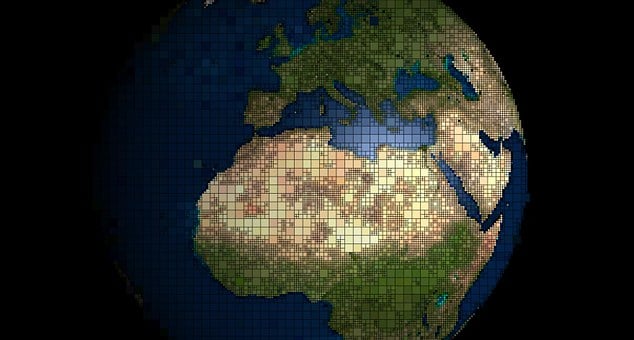Climate change is a global phenomenon that has been affecting the planet for many years. It is a major factor in the displacement of people from their homes, as rising temperatures and changing weather patterns cause droughts, floods, and other extreme weather events. This has led to a rise in human migration, as people seek out new places to live and work. In this article, we will explore the connection between climate change and human migration, and how it is impacting the world today.

1. What is Climate Change?
Climate change is a long-term shift in global weather patterns, caused by human activities such as burning fossil fuels, deforestation, and agricultural practices. These activities have caused an increase in the amount of greenhouse gases in the atmosphere, trapping more heat and causing global temperatures to rise. This has led to changes in weather patterns, such as more extreme weather events, droughts, and floods.
#The #Connection #Between #Climate #Change #and #Human #Migration
2. How is Climate Change Affecting Human Migration?
Climate change is having a direct impact on human migration. Rising temperatures and changing weather patterns are making it difficult for people to stay in their homes. Extreme weather events, such as floods and droughts, are causing displacement and forcing people to seek out new places to live and work. In addition, rising sea levels are causing coastal communities to be submerged, forcing people to move to higher ground.
3. Who is Most Affected by Climate Change-Induced Migration?
Climate change-induced migration is having a disproportionate effect on certain populations. People living in poverty, particularly in developing countries, are more likely to be affected by climate change-induced migration. This is due to their limited access to resources and infrastructure, making them more vulnerable to the effects of climate change. In addition, women and children are more likely to be affected by climate change-induced migration, as they are more likely to be living in poverty and lack access to resources.
#The #Connection #Between #Climate #Change #and #Human #Migration
4. What are the Challenges of Climate Change-Induced Migration?
Climate change-induced migration presents a number of challenges. People who are forced to move due to climate change often lack access to resources and infrastructure, making it difficult for them to find new homes and jobs. In addition, they may face discrimination and xenophobia in their new communities, making it difficult for them to integrate. Finally, climate change-induced migration can lead to increased competition for resources, such as food and water, leading to conflict.
5. What Can Be Done to Address Climate Change-Induced Migration?
There are a number of measures that can be taken to address climate change-induced migration. Governments can provide resources and infrastructure to those affected by climate change-induced migration, such as access to housing, healthcare, and education. In addition, governments can work to reduce the effects of climate change, such as by investing in renewable energy sources and reducing emissions. Finally, governments can work to reduce discrimination and xenophobia, and ensure that those affected by climate change-induced migration are treated with respect and dignity.
#The #Connection #Between #Climate #Change #and #Human #Migration
6. What is the Impact of Climate Change-Induced Migration?
Climate change-induced migration is having a significant impact on the world today. It is leading to increased competition for resources, such as food and water, and is causing displacement and disruption to communities. In addition, it is leading to increased xenophobia and discrimination, and is making it difficult for those affected to find new homes and jobs. Finally, climate change-induced migration is leading to increased poverty and inequality, as those affected often lack access to resources and infrastructure.
7. What is the Connection Between Climate Change and Human Migration?
Climate change is a major factor in human migration, as rising temperatures and changing weather patterns are causing displacement and disruption to communities. This has led to a rise in human migration, as people seek out new places to live and work. In addition, climate change-induced migration is having a disproportionate effect on certain populations, such as those living in poverty and women and children. It is also leading to increased competition for resources, xenophobia, and discrimination. In order to address this issue, governments must take measures to reduce the effects of climate change, provide resources and infrastructure to those affected, and reduce discrimination and xenophobia.
#The #Connection #Between #Climate #Change #and #Human #Migration
♡♥ Featured Post List
● 10 Proven Strategies for Building Wealth Over Time● How to Create a Budget That Helps You Build Wealth
● 5 Financial Habits of Wealthy People
● How to Invest in Stocks and Bonds for Long-Term Wealth
● Why Saving Money is Key to Building Wealth
● 5 Ways to Increase Your Income and Build Wealth
● How to Get Started with Real Estate Investing for Wealth-Building
● 10 Ways to Cut Costs and Save Money Every Month
● Why Building Multiple Income Streams is Essential for Wealth-Building
● How to Build Wealth as a Freelancer or Entrepreneur
0 Comments
Post a Comment